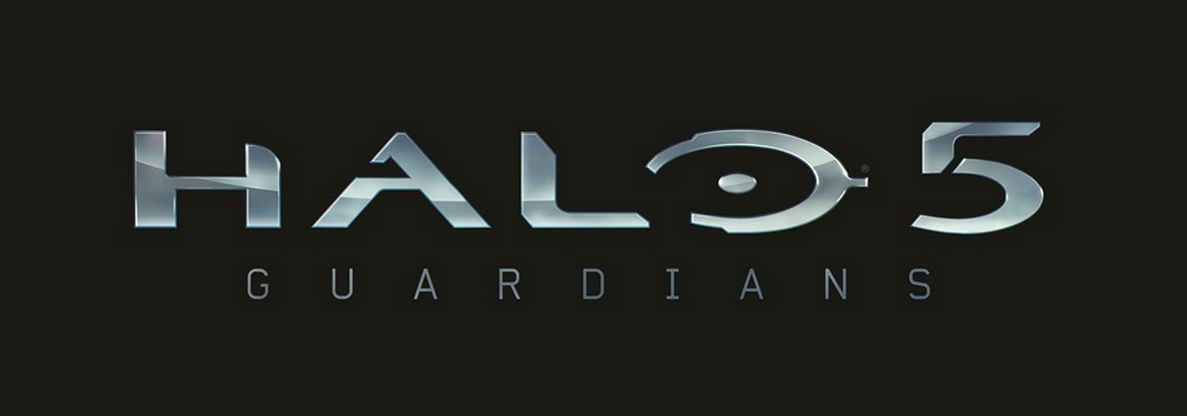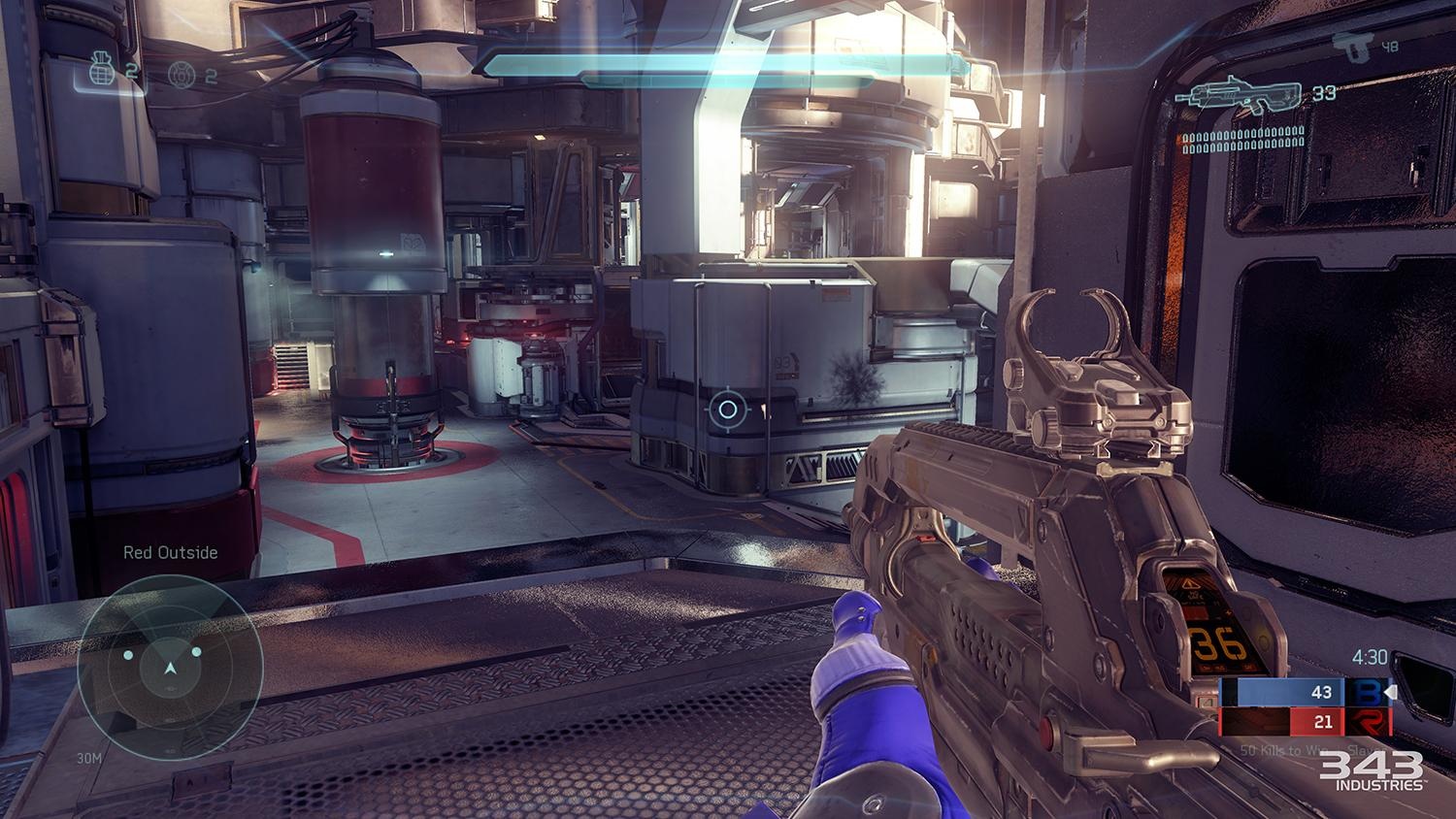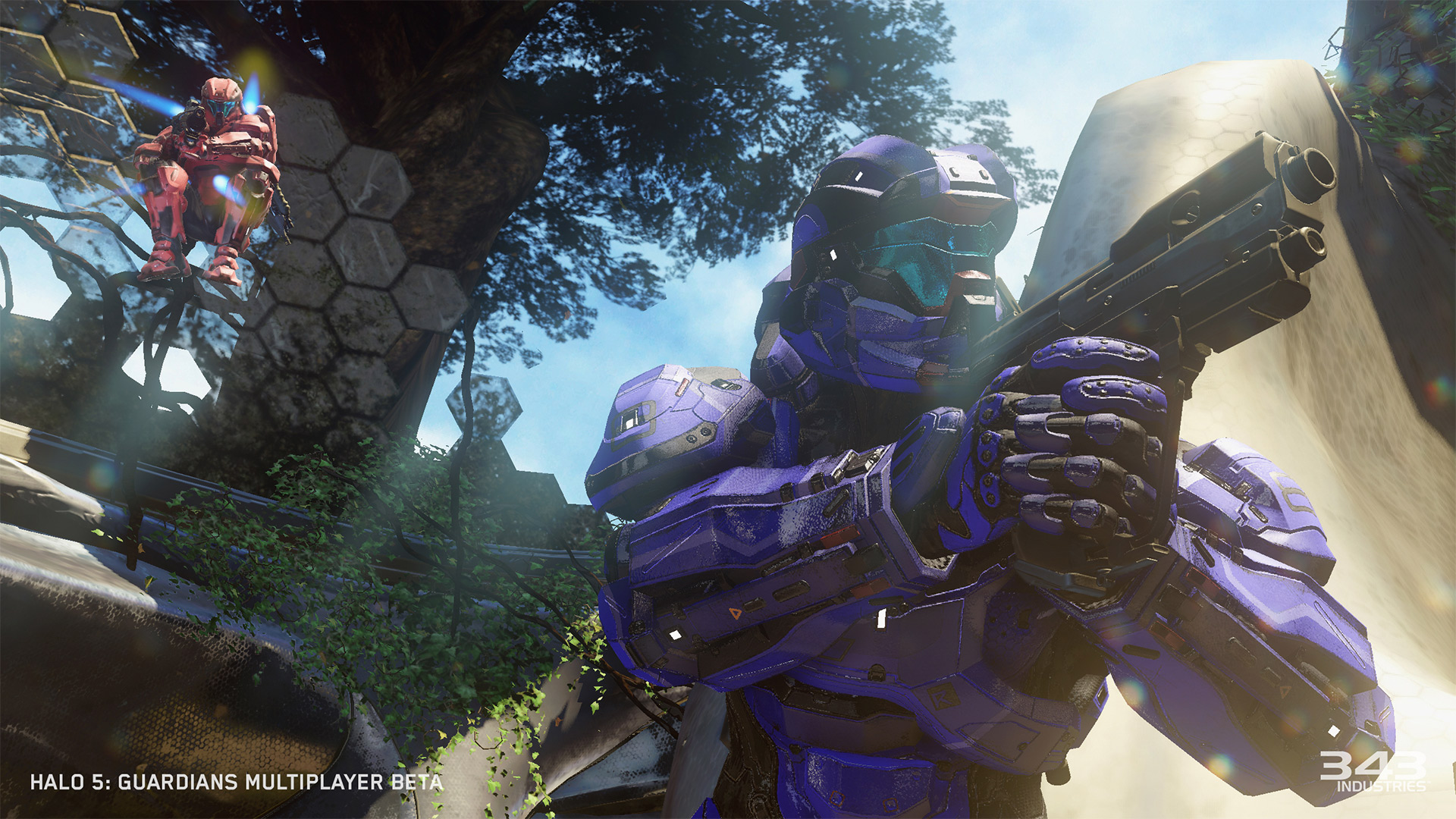Halo 5 Beta: the Good, the Bad, and the Meh.
It’s fairly safe to say that no franchise has had more of an impact on the FPS genre over the last decade than Halo. But it’s also safe to say that the series isn’t what it used to be. No longer the undisputed king of online FPS multiplayer, the series has fallen behind more modern shooters, and alienated longtime fans by trying to be more like its competitors. Halo 5: Guardians is being billed as a return to form by its developers, and they’ve released an early beta to prove it. So does the game live up to the hype?
The original Halo almost single handedly made the first Xbox a success. Halo 2 and 3 proved the viability of peer to peer networked multiplayer on a console, and made Microsoft’s Xbox Live service a must buy. But the last few years have not been kind to the franchise. After a promising debut, Halo 4 had a rather spectacular plummet down the Xbox Live activity ranking in the months following release. Many fans felt that additions and alterations to Halo’s core gameplay were to blame. Customizable loadouts and armor abilities, introduced with Halo Reach and expanded in Halo 4, upset the balance of the game, diminishing the importance of skill, and putting more emphasis on unlockable perks. These changes made the game more modern, likely in an attempt to appeal to players who had moved away from Halo in favor of games like Call of Duty and Battlefield. But it also fundamentally altered the way Halo was played, and it was largely rejected by the fans.
343 Industries, the current developer and overseer of all things Halo, has promised that Halo 5 will be a return to form for the series. In an effort to improve communication between the studio and its fans, and to show how much effort has been put into bringing Halo back to its roots, 343 has released a multiplayer beta for Halo 5 a full year before the game’s projected holiday 2015 release. These days, most betas are really just glorified demos. They’re released far too late in the development cycle of a game to change the finished product in any meaningful way. The Halo 5 beta, though, is different. It’s a true work in progress, and input received from fans now can drastically effect the finished product.
After playing the beta for a couple weeks, I’ve come up with a list of what I like about it, what I don’t like, and what I’m unsure of. There have been numerous improvements, but there are also some rather serious problems. So instead of passing judgement on the beta as a whole, I’m going to divide it up into three categories: the good, the bad, and the meh.
The Good.
- A return to skill based combat. The first thing long time fans will notice about Halo 5 is what isn’t there. Custom loadouts and armor abilities are gone, as are power ups and equipment. All players start with the same weapons, and the same standard set of abilities. This eliminates the advantage high level players enjoyed in Halo 4, as everyone starts every match on an equal footing. This doesn’t mean that all abilities have been removed. It’s just that all players have the same ones. These changes put more of an emphasis on skill and teamwork, and makes it much harder for a single player, or a single strategy, to dominate the match.
- A new and improved jetpack. Yes, the jetpack is back, albeit in a much more limited form. All Spartans are now equipped with rocket thrusters that allow you pull off some very handy maneuvers. The jet dash; a lightning fast dodge to the left or right, is incredibly useful, both as an offensive and defensive tool. You can also use the thrusters to execute a jet bash, which sends you slamming into your opponent, inflicting massive melee damage. Then there’s the ability to briefly hover in the air, allowing you to line up a tricky shot, or scope out enemy positions.
- Clambering. In addition to traditional jumping, Spartans can now clamber over obstacles, and up onto ledges that would otherwise be inaccessible. While I was wary of this new mechanic at first, it turned out to be a fluid, effortless mechanic which makes navigating the maps far more interesting. The animation is pretty slick too.
- No more ordinance drops. Power weapons have always been a focal point of Halo combat, but with the addition of ordinance drops, Halo 4 fundamentally changed the way they were implemented, and many fans felt that it was a big step in the wrong direction. You won’t see a single ordinance drop in Halo 5. Power weapons are once again back where they should be: in central locations, set to appear at specific times, and you don’t even have to memorize how long it takes for them to spawn. An AI callout will announce when the power weapons are about to appear, eliminating to need to “camp” on a spawn point, and adding a new layer of strategy to each match. Do you rush to grab the sniper rifle, or ambush those trying to claim it?
- AI callouts. The AI will do a lot more than announce when power weapons are about to spawn. The automated voices of your teammates will call out all kinds of helpful information, from weapons they pick up, to areas they’ve secured, to where they were killed. While not as useful as actually talking to your teammates, the system does a decent job when nobody in the party feels like chatting.
- Smart Link. While classic weapons like the BR and DMR still have scopes, every weapon in the game now has a zoom function. Known as the “Smart Link,” it allows you to zoom in on a target, regardless of whether your gun is scoped or not. This has the effect of transforming a previously throwaway weapon like the AR into a viable option. Players with scoped weapons still have an advantage at range, but if you’re stuck with an AR, you’ll no longer have to resort to the old “spray and pray” strategy.
- No more flinching. Let’s say you’ve got a sniper rifle, and you’re zoomed in, lining up a perfect shot. Suddenly, you’re hit by enemy fire. If this were Halo 3, you’d be popped out of the scoped view, but your weapon wouldn’t otherwise move. Halo 4 did away with that system, replacing it with a “flinch” mechanic, in which you remain in scoped view, but your aim is knocked significantly off target. Fans, to put it mildly, did not like this. In Halo 5, taking fire while zoomed in will once again knock you back to normal view, and will not flinch your weapon off target.
- Dedicated Servers. For the first time in franchise history, Halo multiplayer is being hosted on dedicated servers. All previous entries in the series relied on peer to peer networks, which led to a long list of problems. Things like “host advantage” and “host booting” were hotly debated topics for years amongst Halo fans, and network exploits were an occasional cause of frustration for players. But all of that is in the past now. While the beta did sometimes take a while to set up a match, I never experienced any lag will in a match, and was never booted from one, or experienced a dreaded host migration. Dedicated servers are a win for all Halo fans, and I’m confident that the matchmaking times will be significantly shorter once the full game ships.
The Bad.
- Sprint. This is a controversial one, for sure. Some players love sprint, some despise it. Originally introduced in Halo Reach as an optional armor ability, it was brought back for Halo 4, and (at least for now) is an integral part of combat in Halo 5 as well. Sprint is now available to all players, and can be used indefinitely. While I don’t despise sprint, I feel that it drastically increases the pace of each match, and makes the old “stalk and strike” style of play obsolete. By making it a standard ability with unlimited usage, even players who don’t like sprint are forced to use it. Try running at normal speed while your three teammates all sprint away, and you’ll feel like you’re playing in slow motion.
- Kill times. It might be nostalgia speaking, but it sure does seem like kill times have dropped. In prior Halo titles, even if your opponent got the first shot, you usually still had a chance to overcome the disadvantage. In Halo 5, the speed of combat has increased, with shootouts rarely lasting more than a few seconds. Shields seem to drop more easily, and health is almost nonexistent. The shorter kill times give the player who hits first an even bigger advantage than before, and makes those extended, nail biting engagements that were so much fun in past Halo games a thing of the past.
- Ground Pound. Unlike the other standard abilities, ground pound feels a bit out of place. The maneuver, which involves leaping in the air, targeting an area below you, and using your thrusters to smash into the ground, is cumbersome and difficult to pull off in combat. Out of the dozens of times I attempted the ground pound, I was only successful twice. The move’s difficulty gives those who do master it a big advantage over other players, and I can envision matches becoming unbalanced by players skilled at the ground pound attack.
The meh.
- Kill Cams. When you’re killed in Halo 5, you’re shown a short replay of your death from your opponent’s perspective. In theory, this is a good idea. It allows you to learn from your mistakes, and adjust your tactics to counter those of your opponents. The problem is that the kill cams are annoying. Seeing every single one of your deaths can be deflating, and the camera angles are sometimes confusing. Worst of all is the musical cue that plays over every single kill cam replay. Imagine having to listen to the Mass Effect death music ten times over the span of a few minutes, and you’ll get an idea of what the kill cam experience is like. But I see potential in the system. It just needs refinement. Restrict replays to deaths by opponents outside your field of vision, and get rid of that awful music, and kill cams might make a great addition to Halo.
- The Maps. A FPS game is only as good as its maps, and Halo has had some classic ones. Names like Blood Gulch, Ascension and Lockout all trigger vivid memories for Halo players, and everyone has their own particular favorites. Mine is Avalanche, in case you were wondering. While there’s nothing bad about the four maps available in the Halo 5 beta, there’s nothing particularly special about them either. They’re all roughly symmetrical, somewhat small, and lack much in the way of vertical combat. I realize that the game is still in development, and 343 probably didn’t have a lot of completed maps to choose from. But I would have appreciated the inclusion of at least one larger map, maybe with a couple of Warthogs and Scorpion tanks thrown in.
- Breakout. Breakout is a new gametype which features two teams of four facing off in a small, symmetrical environment. There are no respawns in Breakout, so once you die, you’re done for the round. At the end of five rounds, the team that won the most rounds win the match. Sounds simple enough, right? Maybe a little too simple. There isn’t much to Breakout. It’s a nice diversion, but feels half baked, and doesn’t hold my attention nearly as long as the more traditional Slayer gametype. With some more tweaking, Breakout might be a hit. But for now, it just isn’t all that engaging.
So now that we’ve covered the good, the bad and the meh, one big question remains. Does Halo 5 do what its developers promised? Does it erase the mistakes of Halo 4, and recapture the magic of past titles? For the most part, yes, it does. Despite all of the tweaks, additions and subtractions, the game just feels right. It feels like Halo in a way that Halo 4 never did. For the first time since they took control of the franchise, I have the sense that 343 Industries are tuned in to their fanbase, and are trying to give them what they want. Instead of changing things just to keep pace with other shooters, they are presenting an evolution of Halo that feels both fun and smart. While I still think that the game has some serious problems, they are the types of issues than can (and probably will) be adjusted many times before Halo 5 is released. For now, as a Halo fan, I’m feeling something I haven’t felt in a long time. Hope.






